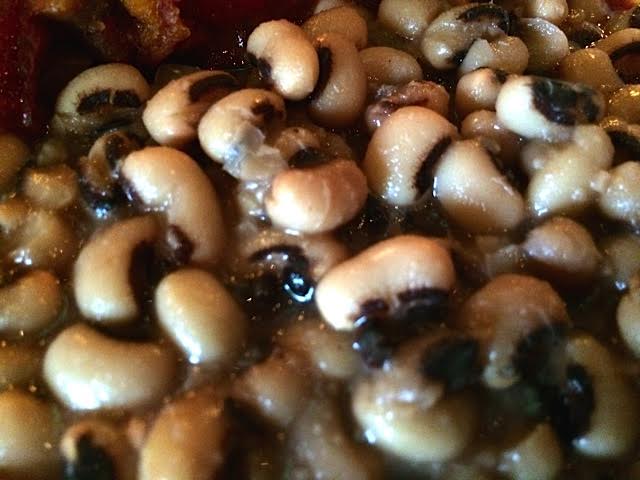New Years Day is here and many of us will be having the meal consisting of black-eyed peas. The black-eyed peas are known to represent “good luck”. This tradition began in the southern states after the Civil War. The northern troops, especially who were serving under General Sherman, would destroy all foods, crops, and livestock that they couldn’t carry with them.
The crops of “‘ field peas” and corn were considered by them to be only good for animal food, were left undestroyed. There were many people in the south that survived the war because of this misunderstanding. Thus giving them a “good luck” reputation. The peas are meant to represent coins.
Mustard greens or collards are usually served with the peas to represent paper money. In the south, corn bread and rice are usually accompaniments for this meal. This tradition has spread throughout the country.
The common commercial pea we see today is the California black-eyed pea. It is pale with a prominent black spot. This highly nutrition legume was promoted by George Washington Carver. It was valuable as a crop, because it adds nitrogen to the soil. It is such a highly nutritious legume. It is high in calcium, folate and vitamin A, as well as a great source of fiber. The blossoms produce large amounts of nectar; so they are grown in many places where honey is produced.
The large amount of pollinators that consume this nectar makes the use of pesticides much more strictly regulated. I always suggest buying organically grown foods, when possible.
Cooking legumes is really very easy. Many people don’t like to eat legumes, because they think it is hard to digest and produces gas. There are a few tricks to cooking that help with the digestibility of the legumes. Soaking in purified water and draining before cooking helps break down the enzymes. I also, add some seaweed to my mixture as I cook them.
I add a piece of Kombu seaweed. It helps to further break down the enzymes so the legumes are more easily digestible. You can add a 3 or 4 inch piece of seaweed to the soaking water and then also keep it in the cooking water. Seaweed adds many nutrients to the food. You can discard it after cooking. Always sort, wash and drain your beans before soaking. Beans double in volume when cooked, so cook one cup if you need two cups.
Recipe
Basic Black Eyed Peas
1. Soak black-eyed peas overnight (or for at least 8 to 12 hours) in purified water with a small 3-inch piece of Kombu seaweed (optional). Have at least two inches of water covering the legumes, because they expand while soaking. (Soaking them will remove enzyme inhibitors and phytic acid and make them more digestible.)
2. Drain off the water.
3. Put the black-eyed peas and Kombu in a large pot of fresh purified water. Make sure you put in enough water to cover them well. The legumes will absorb large amounts of the water.
4. Bring the pot to a boil and drain again.
5. Put more water in the pot and cover the beans completely once more. Bring to a boil, skim any foam off, cover and lower heat to a simmer.
6. Add a little pure coconut oil (about 1 Tablespoon) and a little unrefined sea salt (to your taste) to the pot. The oil makes the dish more savory and the salt adds minerals to the dish. Then simmer the peas until they are tender.
Enjoy a nutritious healthy New Years Day meal with the traditional black-eyed peas.
If you enjoy this recipe, you may like my health and nutrition, international award-winning cookbooks.
You can find them on my website: www.organichealthylife.com or on Amazon on my author page: Author.to/nancyaddison
Happy New Year!
by Nancy Addison copyright@nancyaddison2013





